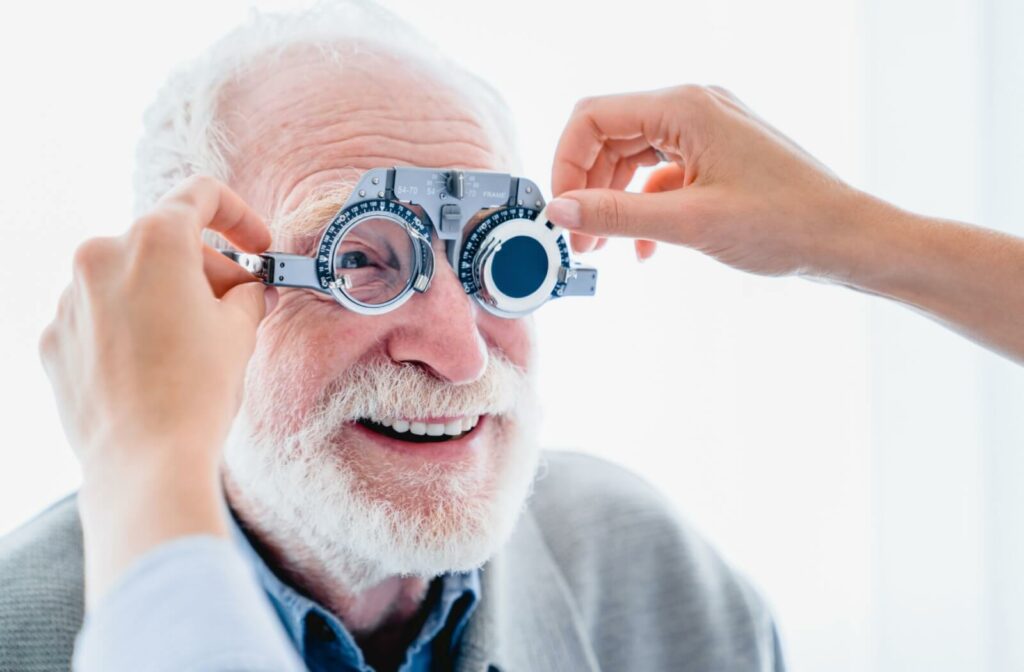Cataract surgery is one of the most common and effective procedures worldwide. But if you’ve undergone this surgery or are considering it, an important question might be lingering in your mind: “Can cataracts come back?” While the short answer is no, the full story is a bit more complex.
Let’s explore why cataracts can’t return, what could mimic the symptoms of cataracts post-surgery, and how you can maintain your eye health after the procedure.
Whether you’re looking to understand the process better or want reassurance about your post-surgery vision, our team at Vision Care Grayslake wants to make sure you have the clarity you need.
What Are Cataracts, & Why Can’t They Recur?
A cataract forms when the natural lens in your eye becomes cloudy, often as a result of aging, prolonged UV exposure, or certain health conditions. This cloudiness impairs your vision, making routine tasks like reading or driving increasingly difficult.
Cataract surgery solves this issue by removing the cloudy lens and replacing it with a clear, artificial intraocular lens (IOL). Once the natural lens is gone, cataracts can’t physically reform. The new artificial lens doesn’t have living cells that would allow it to cloud up like the original.
However, while cataracts don’t technically return, some people experience changes in vision after the surgery that resemble cataract symptoms. That’s where conditions like posterior capsule opacification (PCO) come in.
What Is Posterior Capsule Opacification (PCO)?
Posterior capsule opacification, often referred to as “secondary cataracts,” is the most common cause of vision changes after cataract surgery.
During surgery, your ophthalmologist removes your eye’s cloudy lens but leaves a thin membrane called the posterior capsule intact to support the new IOL. Over time, this capsule can develop a cloudiness caused by the growth of epithelial cells over the lens. This haziness can lead to symptoms similar to cataracts, such as blurry vision, glare, and difficulty focusing on fine details.
Here’s the good news: PCO doesn’t require repeat lens surgery. The issue can be corrected quickly and safely using a specialized laser procedure called a YAG laser capsulotomy. The treatment is painless, is typically completed in a matter of minutes, and restores clear vision for most people instantly.
Other Factors That May Impact Post-Surgery Vision
While cataracts don’t return, several other issues could potentially affect your vision after surgery. It’s important to understand these factors in order to take proactive steps toward preserving your sight.
Age-Related Eye Conditions
Even after cataract surgery, your eyes continue to age. This means other age-related conditions, such as macular degeneration or glaucoma, could develop over time. These are separate from cataracts but they can also impact your vision quality. Regular eye exams are essential for monitoring eye health as you age.
Lifestyle Choices
Unhealthy habits can increase your risk of developing eye problems. Smoking, excessive alcohol consumption, or prolonged exposure to UV light without protection can accelerate the onset of certain eye conditions. Making healthy lifestyle choices will improve the longevity of your vision post-surgery.
Underlying Health Conditions
Medical conditions such as diabetes or high blood pressure can also affect your eye health, even after cataract surgery. Diabetic retinopathy, for instance, is a common complication for people with poorly managed diabetes. Managing these conditions effectively is critical for long-term vision health.
How to Protect Your Vision Post-Surgery
Your cataract surgery may be in the rearview mirror, but maintaining optimal eye health is an ongoing commitment. Adopting these habits can help keep your vision clear and your eyes healthy for years to come:
Shield Your Eyes from UV Rays
Wear sunglasses with 100% UVA and UVB protection whenever you’re outdoors to protect your eyes from harmful sun exposure.

Follow a Balanced Diet
Support your overall eye health by eating foods rich in antioxidants, omega-3 fatty acids, and vitamins A, C, and E. Leafy greens, citrus fruits, fish, and nuts are excellent additions to your diet.
Manage Chronic Health Conditions
Work closely with your healthcare provider to manage chronic conditions like diabetes, high blood pressure, or autoimmune diseases, as these can affect your vision over time.
Maintain a Healthy Lifestyle
Quit smoking if you smoke, limit alcohol intake, and engage in regular exercise. These habits benefit not just your eyes but your overall well-being.
Schedule Routine Eye Exams
Regular check-ups with your optometrist or ophthalmologist ensure early detection of any new issues, including PCO or other age-related illnesses. Most adults should aim for an eye exam every 1–2 years, depending on age and health history.
Why Follow-Up Care Matters
The key to preserving your vision after cataract surgery lies in consistent, proactive care. Follow-up visits with your eye doctor allow them to monitor your eyes for any emerging issues, from PCO to age-related conditions like glaucoma. If concerns arise, your doctor can provide tailored treatments to keep your sight as sharp as possible.
Moving Forward with Confidence
Cataract surgery offers a life-changing opportunity to regain clear vision, and with proper care, the benefits are long lasting. While cataracts themselves cannot return, conditions like PCO or other age-related and lifestyle factors may impact your eyesight over time. Fortunately, with regular eye exams, healthy habits, and prompt treatment when needed, you can enjoy many years of clear, vibrant vision.
If you have questions about cataract surgery or want to schedule a follow-up appointment, the expert team at Vision Care Grayslake is here to help. Our optometrists are dedicated to supporting your eye health and ensuring you see the world in its full brilliance.




